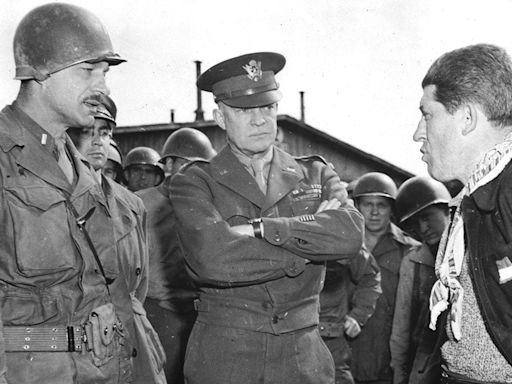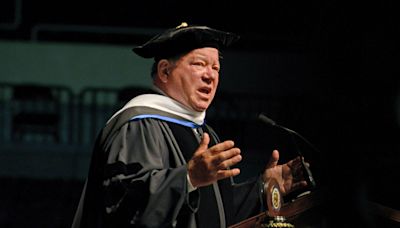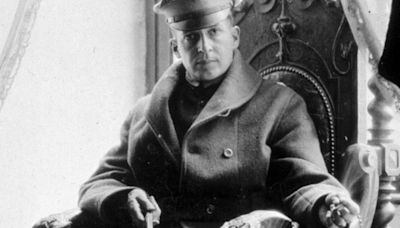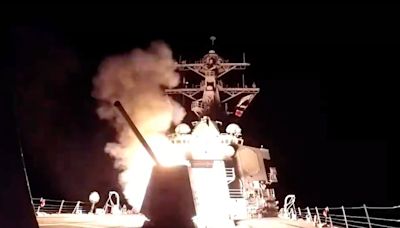Search results
Dwight David Eisenhower (/ ˈ aɪ z ən h aʊ. ər / EYE-zən-how-ər; born David Dwight Eisenhower; October 14, 1890 – March 28, 1969), nicknamed Ike, was an American military officer and statesman who served as the 34th president of the United States from 1953 to 1961.
- Harry S. Truman
- John F. Kennedy
- Overview
- Early career
- Supreme commander
Dwight Eisenhower’s parents, David Jacob and Ida Elizabeth (Stover) Eisenhower, moved their family from Denison, Texas, to Abilene, Kansas, where their forebears had settled in a Mennonite colony. David worked in a creamery, the family was poor, and young Dwight and his brothers were introduced to hard work and a strong religious tradition.
Where was Dwight D. Eisenhower educated?
Eisenhower was more interested in sports than in his studies at Abilene (Kansas) High School. He matriculated at the U.S. Military Academy, where he ranked 61st academically out of 164 graduates. He ranked first in a class of 275 at the army’s Command and General Staff School and then graduated from the Army War College.
How did Dwight D. Eisenhower become famous?
Eisenhower became famous for his military leadership during World War II. After planning the invasions of North Africa, Sicily, and mainland Italy, he became supreme commander of Allied forces in western Europe (1943) and planned the Normandy Invasion (1944) and the conduct of the war in western Europe until the German surrender (1945).
When was Dwight D. Eisenhower president?
Eisenhower was the third of seven sons of David Jacob and Ida Elizabeth (Stover) Eisenhower. In the spring of 1891 the Eisenhowers left Denison, Texas, and returned to Abilene, Kansas, where their forebears had settled as part of a Mennonite colony. David worked in a creamery; the family was poor; and Dwight and his brothers were introduced to hard work and a strong religious tradition at an early age.
“Ike,” as Dwight was called, was a fun-loving youth who enjoyed sports but took only a moderate interest in his studies. The latter was perhaps a sign of one of his later characteristics: a dislike for the company of scholars. Dwight graduated from Abilene High School in 1909, worked for more than a year to support a brother’s college education, and then entered the U.S. Military Academy at West Point, New York, a decision that left his mother, a pacifist, in tears. He excelled in gridiron football but injured a knee in his second year at the academy and was forced to stop playing. In the remarkable class of 1915—which was to produce 59 generals—he ranked 61st academically and 125th in discipline out of the total of 164 graduates.
After being commissioned a second lieutenant, he was sent to San Antonio, Texas, where he met Mamie Geneva Doud (Mamie Eisenhower), daughter of a successful Denver meat packer. They were married in 1916 and had two sons: Doud Dwight, born in 1917, who died of scarlet fever in 1921, and John Sheldon Doud, born in 1922.
Britannica Quiz
Pop Quiz: 17 Things to Know About World War II
During World War I Eisenhower commanded a tank training centre, was promoted to captain, and received the Distinguished Service Medal. The war ended just before he was to be sent overseas. From 1922 to 1924 he was assigned to the Panama Canal Zone, and there he came under the inspiring influence of his commander, Brig. Gen. Fox Conner. With Conner’s assistance, Eisenhower was selected to attend the army’s Command and General Staff School at Fort Leavenworth, Kansas. Then a major, he graduated first in a class of 275 in 1926 and two years later graduated from the Army War College. He then served in France (where he wrote a guidebook of World War I battlefields) and in Washington, D.C., before becoming an aide to Army Chief of Staff Gen. Douglas MacArthur in 1933. Two years later he accompanied MacArthur to the Philippines to assist in the reorganization of the commonwealth’s army, and while there he was awarded the Distinguished Service Star of the Philippines and promoted to the rank of lieutenant colonel. He returned to the United States shortly after Germany’s invasion of Poland initiated the European phase of World War II, and in March 1941 he became a full colonel. Three months later he was made chief of staff of the Third Army, and he soon won the attention of Army Chief of Staff Gen. George C. Marshall for his role in planning war games involving almost 500,000 troops.
When the United States entered World War II in December 1941, Marshall appointed Eisenhower to the army’s war plans division in Washington, D.C., where he prepared strategy for an Allied invasion of Europe. Eisenhower had been made a brigadier general in September 1941 and was promoted to major general in March 1942; he was also named head of the operations division of the War Department. In June Marshall selected him over 366 senior officers to be commander of U.S. troops in Europe. Eisenhower’s rapid advancement, after a long army career spent in relative obscurity, was due not only to his knowledge of military strategy and talent for organization but also to his ability to persuade, mediate, and get along with others. Men from a wide variety of backgrounds, impressed by his friendliness, humility, and persistent optimism, liked and trusted him. A phrase that later became one of the most famous campaign slogans in American history seemed to reflect the impression of everyone who met him: “I like Ike!”
Special offer for students! Check out our special academic rate and excel this spring semester!
Learn More
Eisenhower was promoted to lieutenant general in July 1942 and named to head Operation Torch, the Allied invasion of French North Africa. This first major Allied offensive of the war was launched on November 8, 1942, and successfully completed in May 1943. Eisenhower’s decision to work during the campaign with the French admiral François Darlan, who had collaborated with the Germans, aroused a storm of protest from the Allies, but his action was defended by President Franklin D. Roosevelt. A full general since that February, Eisenhower then directed the amphibious assault of Sicily and the Italian mainland, which resulted in the fall of Rome on June 4, 1944.
During the fighting in Italy, Eisenhower participated in plans to cross the English Channel for an invasion of France. On December 24, 1943, he was appointed supreme commander of the Allied Expeditionary Force, and the next month he was in London making preparations for the massive thrust into Europe. On June 6, 1944, he gambled on a break in bad weather and gave the order to launch the Normandy Invasion, the largest amphibious attack in history. On D-Day more than 156,000 troops landed in Normandy. Invading Allied forces eventually numbered 1,000,000 and began to fight their way into the heart of France. On August 25 Paris was liberated. After winning the Battle of the Bulge—a fierce German counterattack in the Ardennes in December—the Allies crossed the Rhine on March 7, 1945. Germany surrendered on May 7, ending the war in Europe. Although Eisenhower was criticized, then and later, for allowing the Russians to capture the enemy capital of Berlin, he and others defended his actions on several grounds (the Russians were closer, had more troops, and had been promised Berlin at the Yalta Conference of February 1945). In the meantime, in December 1944, Eisenhower had been made a five-star general.
(Read Sir John Keegan’s Britannica entry on the Normandy Invasion.)
Oct 27, 2009 · Learn about the life and achievements of Dwight D. Eisenhower, the 34th president of the United States who led the Allied forces in World War II and Cold War, and served two terms in the White House. Find out how he managed Cold War-era tensions, ended the Korean War, created the Interstate Highway System, and more.
- 4 min
Apr 3, 2014 · Learn about the life and achievements of Dwight D. Eisenhower, the 34th president of the United States who served two terms from 1953 to 1961. Find out how he rose from a military leader to a political leader, and how he promoted Atoms for Peace and Cold War peace at the United Nations.
Dwight D. Eisenhower's tenure as the 34th president of the United States began with his first inauguration on January 20, 1953, and ended on January 20, 1961. Eisenhower, a Republican from Kansas , took office following his landslide victory over Democratic nominee Adlai Stevenson in the 1952 presidential election .
People also ask
How did Eisenhower die?
How did Eisenhower become president?
What did Eisenhower do on D-Day?
What did Eisenhower do in WW2?
Learn about the life and achievements of the 34th President of the United States, who led the Allied forces in World War II and pursued a moderate policy in the Cold War. Find out his background, family, health, and legacy from the official White House Historical Association.
Feb 19, 2019 · Learn about the life and presidency of Dwight D. Eisenhower, the thirty-fourth president of the United States and the first to fly in a helicopter. Discover the design and meaning of the Official 2019 White House Christmas Ornament that honors his legacy.






